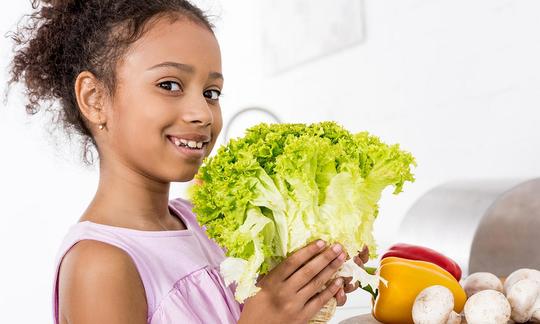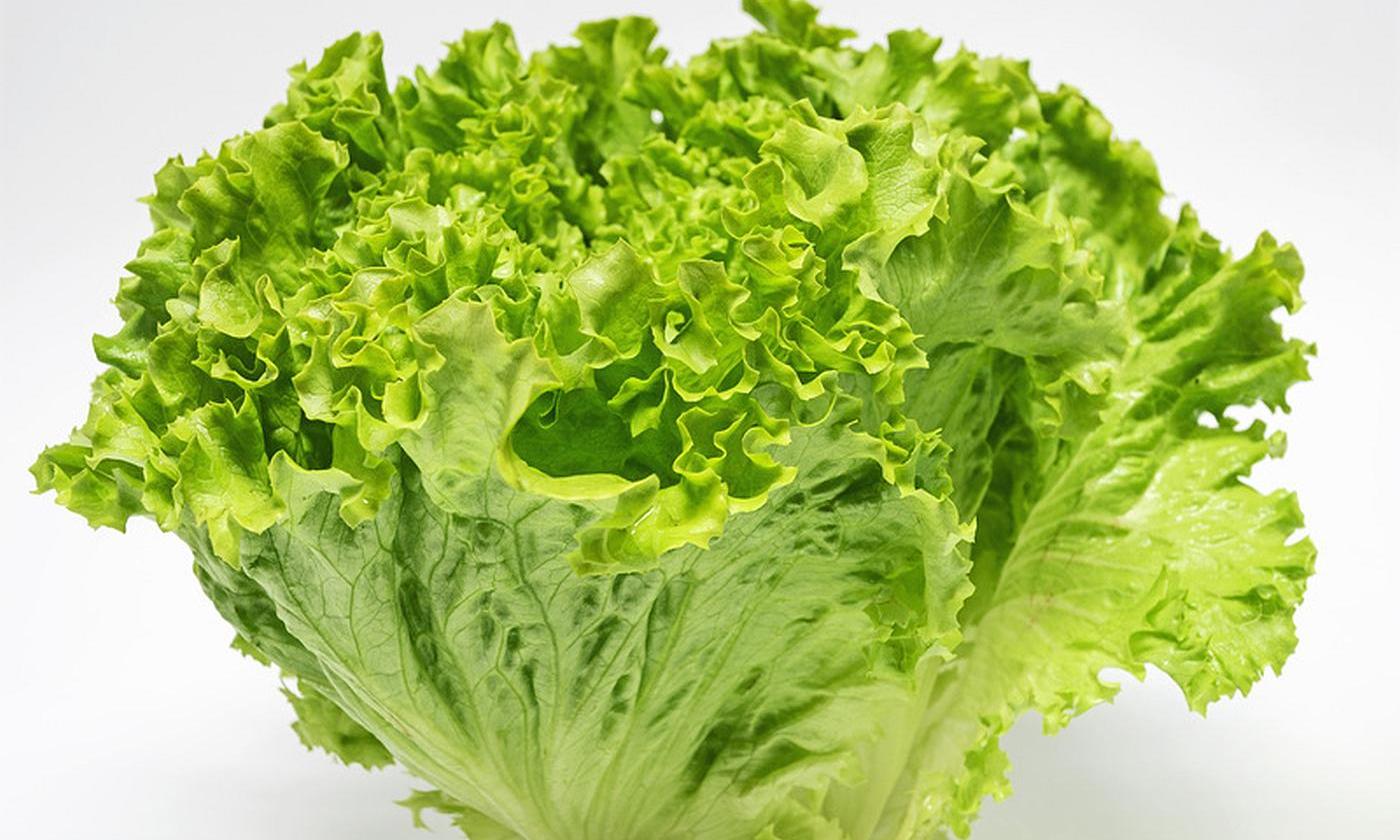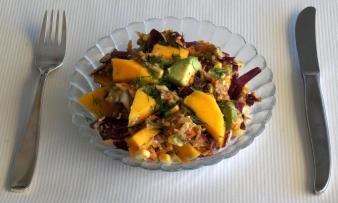Table of contents
The leaves of Batavia lettuce ( Lactuca sativa var. capitata, Crisphead group) are green, partly reddish-brown in colour and strongly curled at the edges.
Use in the kitchen
What is Batavia lettuce? With its curly leaves and different colors, Batavia lettuce is a great change from the more well-known types of lettuce. Some Batavia varieties form firm heads, others only develop loose leaves. 1 Batavia is mainly eaten raw as a salad, e.g. as a starter. Its beautiful coloring also makes it wonderful for garnishing and decorating dishes. You can leave the Batavia lettuce to stand for a little longer, because even with dressing, the leaves stay crisp for quite a while and do not collapse so quickly.
Batavia mixes well with other types of lettuce such as iceberg lettuce orlettuce, creating a salad base with more variety in terms of taste. It can be combined with any type of raw vegetable such as tomatoes, cucumbers or sweet peppers.
Does Batavia taste bitter? Unlike endive or radicchio, Batavia tastes only slightly bitter. To reduce this bitter note, it is best to combine it with sweet ingredients such as cantaloupe melon, nectarine, peach or apple. Batavia salad tastes delicious with avocado and mango in a nut-chia dressing. Alternatively, you can choose a slightly sweet ginger-orange dressing or a sweet and spicy balsamic Dijon dressing. If you want to emphasize the bitter note of the salad, it can be combined well with celery or lovage.
A topping of pumpkin seeds, linseed or sunflower seeds gives the salad a crunchy, nutty addition. Batavia can also be used for green smoothies. However, due to the texture of the leaves, it tends to make them rather thick.
Vegan recipe for Batavia salad with melon:
Ingredients (for 4 people): 1 Batavia salad, 1 cantaloupe melon, 1/2 cucumber, 1 spring onion, juice of one lime, 1 tbsp rapeseed oil, 1 sprig of peppermint.
Preparation: Clean the Batavia lettuce and tear into bite-sized pieces. Remove the seeds from the melon and cut into wedges, then peel and cut the flesh into thin slices. Wash and dice the cucumber. Finely chop the spring onion. Wash the lime in hot water, dry it and grate the peel. Then squeeze the lime and mix the juice with rapeseed oil, pepper and salt. Arrange the Batavia lettuce on a plate and garnish with melon slices and cucumber cubes. Pour the spring onion and lime dressing over the salad and sprinkle with peppermint and lime peel.
Vegan recipes with Batavia lettuce can be found under the note: " Recipes that have the most of this ingredient ".
| Not only vegans or vegetarians should read this: Vegans often eat unhealthily. Avoidable nutritional errors. |
Purchasing - Storage
Batavia lettuce can occasionally be found in the range of large supermarket chains such as Coop, Migros, Denner, Volg, Spar, Aldi, Lidl, Rewe, Billa, Edeka or Hofer, sometimes even in controlled organic quality (organic quality). Batavia lettuce can also sometimes be bought in organic supermarkets such as Denn's Biomarkt or Alnatura, as well as seasonally at the weekly market.
The availability of Batavia varies depending on the size of the store, catchment area, etc. You can find our recorded food prices for the DA-CH countries above under the ingredient image - and by clicking you can see their development at various suppliers.
In Central Europe, Batavia lettuce is harvested outdoors from May to October. Outside of the season, the lettuce is grown in greenhouses, which is why it can be found in stores almost all year round. 1
Found in the wild
Batavia is a cultivated group of varieties of garden lettuce ( Lactuca sativa), which does not occur in the wild. Cultivated garden lettuce can be traced back to several wild forms, with prickly lettuce ( Lactuca serriola) being the closest relative. 4 This grows in the warm temperate zones of southern Europe and western Asia, but is spreading further and further into northern Europe. 5
Storage tips
Wrapped in a damp tea towel, Batavia lettuce will keep for four to five days in the vegetable compartment of the refrigerator. 1
Ingredients - nutritional value - calories
Since no data is available for Batavia, the ingredients are taken from iceberg lettuce. Both lettuces belong to the Crisphead group, which is why it can be assumed that the nutrients are similar. The ingredients listed provide a good guideline. It should be noted that the composition of the micronutrients is subject to natural fluctuations due to growing conditions, varieties and soil composition.
Batavia lettuce (raw) contains 14 kcal per 100 g and is therefore very low in calories. The protein content is low at 0.9 g/100g and there is hardly any fat either at 0.14 g/100g. The carbohydrates (3.0 g/100g) are mostly made up of fiber (1.2 g/100g). 6
Raw Batavia contains 24 µg/100g of vitamin K (32% of the daily requirement). This is low compared to other salads.Lettuce and romaine lettuce contain 102 µg/100g and rocket 109 µg/100g, which covers around 136% and 145% of the daily requirement of vitamin K respectively. More vitamin K is found in kale (705 µg/100g) and chard (830 µg/100g), both of which can also be eaten as a salad. 6
Green salad is known for its high folate (folic acid) content. In contrast to other salads, Batavia contains little of it: 29 µg per 100 g, which is 15% of the daily requirement. There is also little folate inlettuce (73 µg/100g). In contrast, romaine lettuce with 136 µg and endive with 142 µg contain a lot of folate. With 100 g of romaine lettuce you can cover 68% of the daily requirement of folic acid, with 100 g of endive even 71%. 6
Batavia lettuce also contains potassium : 141 mg per 100 g, which covers 7% of the daily potassium requirement. Slightly more potassium is found inlettuce (238 mg/100g) and romaine lettuce (247 mg/100g). Rocket with 369 mg and lamb's lettuce with 459 mg per 100 g have significantly higher values. This corresponds to a coverage of 18% and 23% of the daily requirement. Good sources of potassium are pulses and nuts, for example almonds (733 mg/100g) or chickpeas (718 mg/100g). 6
You can find all the ingredients of Batavia lettuce, the coverage of the daily requirement and comparison values with other ingredients in our nutrient tables. In the article Nutrients explained you will get a detailed insight into the topic.
Health effects
Is Batavia lettuce healthy? Nitrate-containing foods such as Batavia lettuce have a blood pressure-lowering effect. Under certain conditions, nitrate promotes the formation of nitric oxide. This is involved, among other things, in the relaxation of blood vessels, which lowers blood pressure and protects the vessels. It also supports the healing process of damaged blood vessels. 13
Studies show that increased nitric oxide levels through nitrite not only improve blood flow but also increase the efficiency and strengthening of muscle contraction, which increases physical endurance and improves athletic performance. 14
The different varieties of Latuca sativa have pharmacological potential. Antimicrobial, antioxidant, neuroprotective and hypnotic effects (sleeping pill, antidepressant) have been demonstrated. The chemical composition of the plant includes so-called secondary metabolites. Among these are terpenoids, flavonoids and phenols, which are said to be responsible for the biological activities of the lettuce. 16
Dangers - Intolerances - Side effects
Like other leaf and root vegetables, Batavia lettuce contains nitrate, which it needs as a source of nitrogen for growth. The nitrate in the soil comes either from soil bacteria that convert it from plant residues, or from additional fertilizer. Nitrate in food is converted to nitrite by microbiological or enzymatic action if it is stored and transported improperly or if hygiene practices are ignored. Nitrite is also produced in the body, for example by the enzymes in saliva. 7
High nitrite levels are problematic for infants. It causes iron in the blood to oxidize, so that the hemoglobin in the blood is converted to methemoglobin. This cannot bind the oxygen in the blood, which leads to a disruption in oxygen transport. 9 The WHO recommends that infants under 3 months of age should not be given foods with a medium or high nitrate content and that attention should be paid to the quality of drinking water when preparing baby food. 12 Adults have less to fear from this effect of nitrite on the blood. They usually develop an enzyme over the course of their lives that can reverse the conversion of hemoglobin to nitrite. 9
Nitrate or nitrite has fallen into disrepute because it can combine with certain amino acids to form what are known as nitrosamines. Some of these are considered carcinogenic. Nitrosamines can form either during digestion or during cooking at high heat. Nitrite, which is found in processed meat products such as ham or bacon, is particularly problematic. Heating the products in combination with the protein density in the meat promotes the formation of nitrosamines.
Vegetables containing nitrates, on the other hand, are less likely to form nitrosamines, as they are usually low in protein and contain protective ingredients. In addition, nitrate and nitrite also have positive effects on the body. 9 If the nitrate in the diet comes from vegetables, it even promotes health (more on this under Health Aspects - Effects).
Anyone who still wants to consume as little nitrate as possible should consume seasonal organic Batavia lettuce (see Cultivated Harvest) or prefer iceberg lettuce and radicchio, which, in contrast to other leaf lettuces, have a low nitrate content. 15
Ecological footprint - animal welfare
Researchers at the Institute for Energy and Environmental Research in Heidelberg have calculated the CO 2 footprint of iceberg lettuce ( Lactuca sativa var. capitata nidus tenerimma), a very close relative of Batavia lettuce ( Lactuca sativa var. capitata) . The CO 2 footprint per head of iceberg lettuce (in Germany) is around 0.5-0.6 kg CO 2 eq/head of lettuce. Packaging and the necessary refrigeration in retail make up the largest share. The CO 2 footprint of early lettuce from heated greenhouses is around 15% larger. Early lettuce from unheated greenhouses has a better ecological balance than imported lettuce from Spain. 17
According to a Danish calculation, lettuce (including iceberg lettuce) has a footprint of 0.41 kg CO 2 eq/kg. Agriculture accounts for the majority of this. 19
Greenpeace Switzerland, the city of Zurich and other cooperation partners (see literature) are showing a poster with the CO 2 footprint of various foods in relation to the amount consumed. The foods are colour coded according to their impact on the climate: foods in the green area, in the middle, have a footprint that is 50% better than the average and thus meet the climate targets. In the white area, you are better, in the orange area, you are worse than the average and foods in the red area are at least twice as bad as the average diet. Batavia is in the green area. 18
The global average water footprint of Lactuca sativa (lettuce belongs to the same species as Batavia) is 237 l/kg. The largest share is green water (rain and soil water). This puts Lactuca sativa slightly above the average water footprint for vegetables (322 l/kg). 20 Vegetables in general have only a fraction of the water footprint of animal products. Eggs, for example, have a global average water footprint of 3265 l/kg. 21
Worldwide occurrence - cultivation
Batavia lettuce originally comes from France. It is a cross between iceberg lettuce and lettuce. 1 Batavia lettuce and other leaf lettuces are grown worldwide, with China, the USA and India being the main growing areas in 2020. 10 In Europe it is cultivated mainly in France, Italy and the Benelux countries. 2
Cultivation in the garden or as a potted plant
Batavia is easy to plant in the garden bed, balcony box or in a pot. It prefers a sunny to partially shaded location. The soil should be loose and permeable, and have a high humus and nutrient content. Batavia can be grown indoors or in a greenhouse from the end of February. Sowing outdoors and planting the seedlings takes place from mid-March. Batavia can be sown and planted out until the end of July. The seed furrows with the seeds are made at a depth of 0.5 to 1 cm and a distance of 25 to 30 cm. Lettuces are light germinators, which is why they should only be covered with a little soil. If necessary, separate young plants. Regular watering, removing weeds and loosening the soil are important for the lettuce to grow well. Batavia is an ideal leaf lettuce. The individual leaves are harvested from the outside inwards as needed. The lettuce heart is left standing so that the plant can grow back. 1, 3
Cultivation - Harvest
Batavia lettuce can be harvested eight weeks after sowing. 1 Production is complex because the lettuce cannot (yet) be harvested by machine. At the moment, lettuce is harvested by hand. 11 To do this, use a sharp knife to cut off the head of lettuce with the stalk just above the ground. Alternatively, you can also twist the whole lettuce out at the root. 1
Organically grown Batavia lettuce contains lower nitrate levels than conventionally grown lettuce, as no synthetic fertilizers are used. Seasonal organic Batavia lettuce grown outdoors also contains less nitrate than that grown in a greenhouse, as sunlight breaks down the stored nitrate in the lettuce. 8
Further information
Batavia lettuce ( Lactuca sativa var. capitata) belongs to the genus of lettuce ( Lactuca), which belongs to the daisy family (Asteraceae). Cultivated garden lettuce is divided into several groups: Crisphead group (iceberg lettuce and Batavia lettuce), Cos group (romaine lettuce) and Butterhead group (head lettuce). Cut and picked lettuce (e.g. oak leaf and Lollo rossa/bionda) are also becoming increasingly popular. 1
Alternative names
Batavia is also called curly lettuce, English Crisp Lettuce, Summer Crisp or French Crisp.
Bibliography - 20 Sources
| 1. | Planatura.garden Bataviasalat: Alles zum Anbauen & Ernten im Garten. |
| 2. | Industrieverband Agrar. Bataviasalat - wie gemacht fürs Büffet und die Figur. 2018. |
| 4. | Křístková E, Doležalová I, Lebeda A et al. Description of morphological characters of lettuce (Lactuca sativa L.) genetic resources. Hort. Sci. (Prague), 2008,35: 113-129. |
| 5. | D'Andrea L, Meirmans P, van de Wiel C et al. Molecular Biogeography of Prickly Lettuce (Lactuca serriola L.) Shows Traces of Recent Range Expansion. J Hered. 2017 Mar 1;108(2): 194-206. |
| 6. | USDA United States Department of Agriculture. |
| 7. | BfR Bundesamt für Risikobewertung. Fragen und Antworten zu Nitrat und Nitrit in Lebensmittel. 2013. |
| 8. | Pini U. Das Bio-Food Handbuch. Kleemann: Hamburg, Potsdam. 2014: 509-512, 639-640. |
| 9. | Biesalski HK, Grimm P. Taschenatlas der Ernährung; 6. Auflage (2015); Georg Thieme Verlag, Stuttgart und New York. |
| 10. | FAOSTAT Food and Agriculture Organization of the United Nations. Lettuce and chicory (2020). |
| 11. | Pflanzenforschung.de. Rollen bald Köpfe? Roboter als Helfer bei der Salat-Ernte. 2019. |
| 12. | World Health Organization. Evaluations of the Joint FAO/WHO Expert Committee on Food Additives (JECFA). Sodium Nitrite. |
| 13. | Guimaraes DA, Batista RIM, Tanus-Santos JE. Nitrate and nitrite-based therapy to attenuate cardiovascular remodelling in arterial hypertension. Basic Clin Pharmacol Toxicol. 2021 Jan;128(1): 9-17. |
| 14. | Domínguez R, Cuenca E, Maté-Muñoz JL et al. Effects of Beetroot Juice Supplementation on Cardiorespiratory Endurance in Athletes. A Systematic Review. Nutrients. 2017 Jan 6;9(1): 43. |
| 15. | Bayerisches Landesamt für Gesundheit und Lebensmittelsicherheit. Nitrat – Welche Salatarten enthalten wie viel? – Untersuchungsergebnisse 2015. |
| 16. | Noumedem JAK, Djeussi DE, Hritcu L, Mihasan M, Kuete V. Lactuca sativa. In: Medicinal Spices and Vegetables from Africa. Elsevier; 2017. S. 437–449. |
| 17. | Müller-Lindenlauf M, Zipfel G, Rettenmaier N, Gärtner S, Münch J, Paulsch D, Reinhardt G, ifeu – Institut für Energie- und Umweltforschung Heidelberg gGmbH (Hrsg). CO₂-Fussabdruck und weitere Umweltwirkungen von Gemüse aus Baden-Württemberg. 2013. |
| 18. | Greenpeace Schweiz, Stadt Zürich, Planted Foods AG, Branding Cuisine, Tinkerbelle, Inge, myblueplanet, ProVeg International, Dr. Earth, FightBack und Eaternity. All You Can Eatfor climate - Poster. ayce.earth. 2022. |
| 19. | CONCITO.The big climate database. Version 1.1. Lettucce, iceberg (incl. crisphead types). 2024. |
| 20. | Mekonnen MM, Hoekstra AY. The green, blue and grey water footprint of crops and derived crop products. Hydrol Earth Syst Sci. 25. Mai 2011;15(5):1577–1600. |
| 21. | Mekonnen MM, Hoekstra AY. A global assessment of the water footprint of farm animal products. Ecosystems. April 2012;15(3):401–415. |











Comments